 | |
| Genre | Role-playing game |
|---|---|
| Publisher | TSR |
| Media type | |
Giantcraft is a supplement to the 2nd edition of the Advanced Dungeons & Dragons fantasy role-playing game.
 | |
| Genre | Role-playing game |
|---|---|
| Publisher | TSR |
| Media type | |
Giantcraft is a supplement to the 2nd edition of the Advanced Dungeons & Dragons fantasy role-playing game.
Giantcraft is a sourcebook for the Forgotten Realms campaign setting focusing on giants. [1]
Shannon Appelcline commented that of the changes to the Forgotten Realms publications in the early 1990s, "The biggest change was that the geographical setting books had faded away starting in the early '90s. They were replaced by a number of other lines. The "FOR" books instead looked at organization in the Realms — much like the splatbooks of White Wolf and others. They ran from FOR1: Draconomicon (1990) to Giantcraft (1995)." [2] : 104
Andy Butcher reviewed Giantcraft for Arcane magazine, rating it a 5 out of 10 overall. [1] He suggests that if the players are bored by giants and no longer find them interesting, "then Giantcraft should be allowed to permeate your gameworld. It offers a refreshingly different perspective on giants." [1] He continues, "These are not the two-dimensional, high hit-dice end-of-campaign bosses we've grown accustomed to. They are fully fleshed-out stars. And not only does the Giantcraft supplement slip seamlessly into Forgotten Realms, but also it requires only minimal tweaking to transport all the bits you want to any AD&D universe." [1] Butcher does criticize that "Giantcraft lacks cohesion and direction. Sure you're told a lot, but you're told the same lot repeatedly. Some sections are plain laughable ... while others, such as the chapter on giant-kin, are plain tedious." [1] He credits the book that "Almost by accident, though, Giantcraft does manage though to reinvent one of AD&D's less glamorous creatures with a liberal sprinkling of great ideas, anecdotal character descriptions and veiled hints". [1] Butcher ends the review by saying "The lack of focus and repetitive nature force Giantcraft from the 'must read' list but next time you want an inspiration hit, you should find it here." [1]
Forgotten Realms is a campaign setting for the Dungeons & Dragons (D&D) fantasy role-playing game. Commonly referred to by players and game designers as "The Realms", it was created by game designer Ed Greenwood around 1967 as a setting for his childhood stories. Several years later, it was published for the D&D game as a series of magazine articles, and the first Realms game products were released in 1987. Role-playing game products have been produced for the setting ever since, in addition to novels, role-playing video game adaptations, comic books, and the film Dungeons & Dragons: Honor Among Thieves.

Spelljammer is a campaign setting originally published for the Advanced Dungeons & Dragons role-playing game, which features a fantastic outer space environment. Subsequent editions have included Spelljammer content; a Dungeons & Dragons 5th edition setting update was released on August 16, 2022.
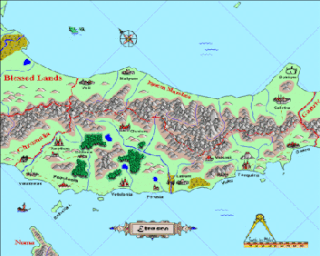
Campaign Cartographer is a Windows map creation program created by ProFantasy Software originally in 1993.
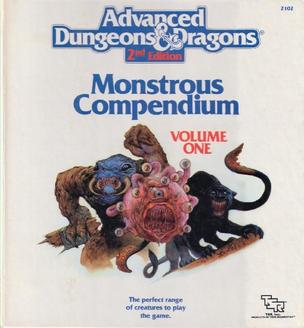
The Monstrous Compendium is a series of accessories for the Advanced Dungeons & Dragons fantasy role-playing game released from 1989 to 1998. The title was then used for a series of 5th Edition Dungeons & Dragons supplements released on D&D Beyond.

The planes of the Dungeons & Dragons roleplaying game constitute the multiverse in which the game takes place. Each plane is a universe with its own rules with regard to gravity, geography, magic and morality. There have been various official cosmologies over the course of the different editions of the game; these cosmologies describe the structure of the standard Dungeons & Dragons multiverse.
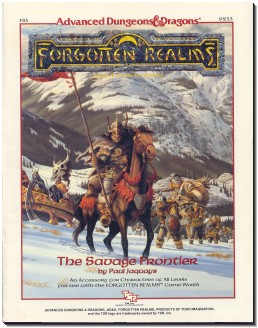
The Savage Frontier is an accessory for the Dungeons & Dragons campaign setting Forgotten Realms. It describes the Savage Frontier of Faerûn. The book was written by Jennell Jaquays and published by TSR in 1988. Cover art is by Larry Elmore, with interior illustrations by Esteban Maroto, and cartography by Dave Sutherland, Dennis Kauth, and Jaquays.
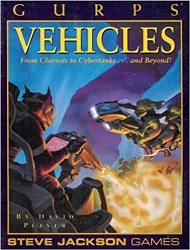
GURPS Vehicles is a sourcebook for GURPS by David Pulver. The first edition was published in 1993.
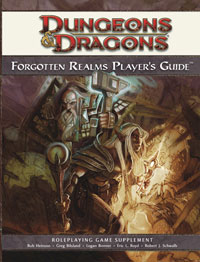
The Forgotten Realms Player's Guide is a supplement to the 4th edition of the Dungeons & Dragons role-playing game.

Dark Sun is an original Dungeons & Dragons (D&D) campaign setting set in the fictional, post-apocalyptic desert world of Athas. Dark Sun featured an innovative metaplot, influential art work, dark themes, and a genre-bending take on traditional fantasy role-playing. The product line began with the original Dark Sun Boxed Set released for D&D's 2nd edition in 1991, originally ran until 1996, and was one of TSR's most successful releases.

Ravenloft: Realm of Terror is a boxed set accessory published in 1990 for the Ravenloft campaign setting for the Advanced Dungeons & Dragons fantasy role-playing game.
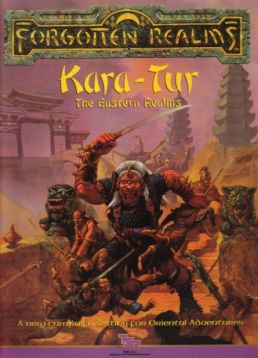
Kara-Tur: The Eastern Realms is an accessory and campaign setting for the Advanced Dungeons & Dragons fantasy role-playing game.
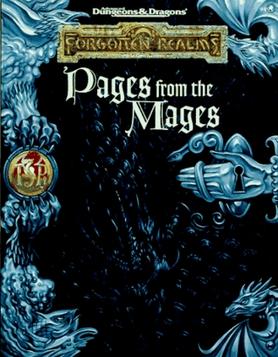
Pages from the Mages is an accessory for the 2nd edition of the Advanced Dungeons & Dragons fantasy role-playing game, published in 1995.
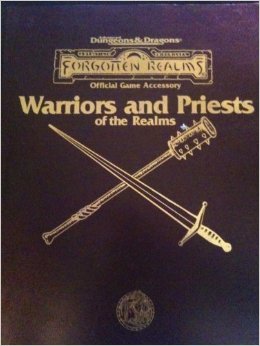
Warriors and Priests of the Realms is an accessory for the 2nd edition of the Advanced Dungeons & Dragons fantasy role-playing game, published in 1996.
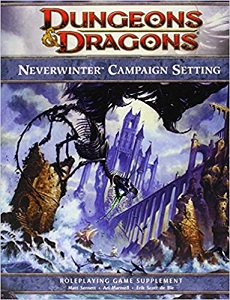
Neverwinter Campaign Setting is a supplement to the 4th edition of the Dungeons & Dragons role-playing game.

Menzoberranzan: City of Intrigue is a system-neutral supplement to the Dungeons & Dragons role-playing game published towards the end of 4th edition.

Ed Greenwood Presents Elminster's Forgotten Realms is an edition-neutral sourcebook for the Forgotten Realms published during the 4th edition of the Dungeons & Dragons role-playing game.

Byzantium Secundus is a supplement published by Holistic Design in 1996 for the science fiction space opera role-playing game Fading Suns.
The World of Aden is a 1995 role-playing game supplement published by West End Games for MasterBook.

Theatrix Ironwood is a supplement published by Backstage Press in 1994 for the diceless role-playing game Theatrix.